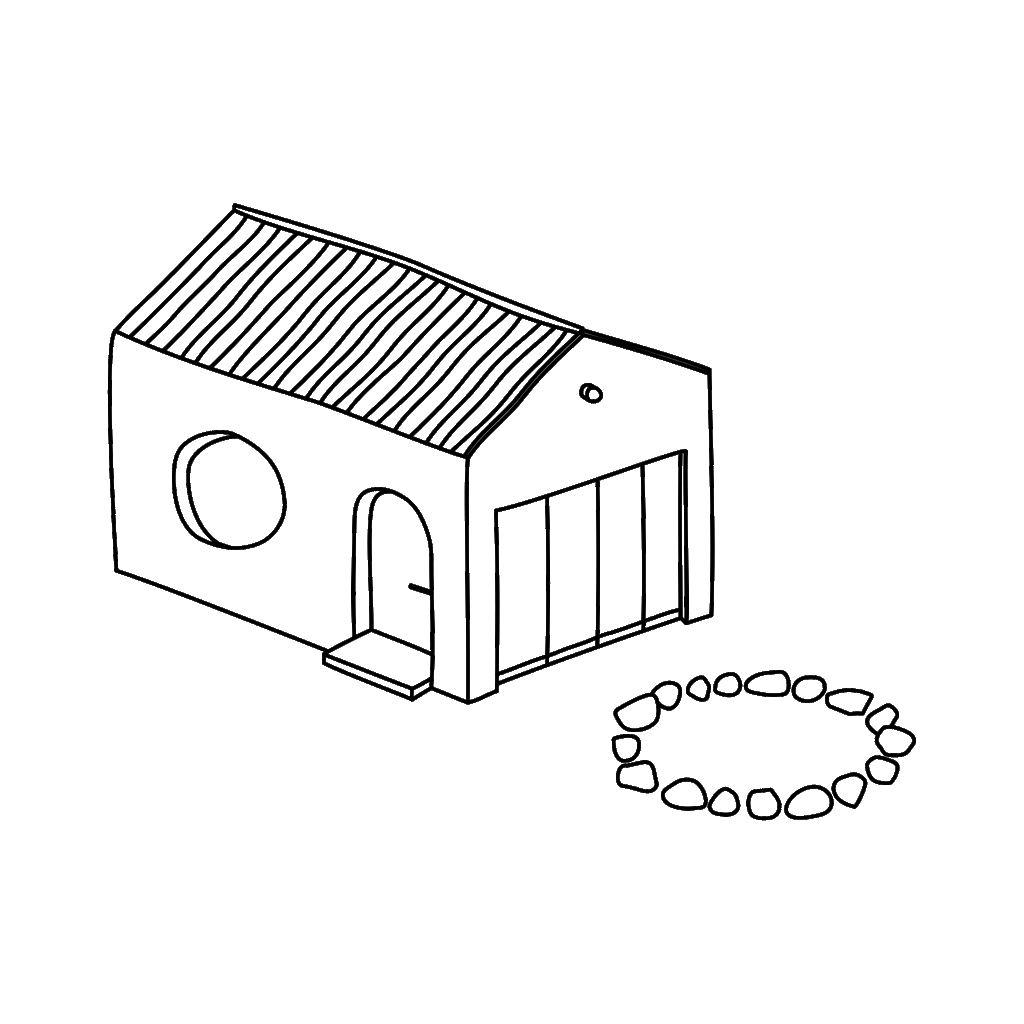Small Footprint, High Design
Architecture is at odds with nature. Condominiums are built in the ashes of meadows, parking lots on the beds of forests. To design is to undo. To build is to take away. And so treetops are phased out in favor of sharp lines and concrete.
But within that rigid dichotomy, there are architects and designers striving to bridge the divide between the natural and the man-made. They seek out innovative solutions to incorporate a site’s landscape into the final design; boulders exist in internal spaces, trees are rooted in courtyards, medieval moats are made modern. The natural and artificial commingle and are made better for it.
While many modern-day architects use organic materials and glean inspiration from native structures, the following designers and firms create strictly with the intent to preserve. In this new sustainable mode of design, cliffsides are not obliterated, but carved to fit a space for something human.
Peter Zumthor
Take a look at the exterior of a Peter Zumthor building and prepare to be unimpressed. The Swiss architect’s work is notoriously spare, devoid of the flashiness we’ve come to expect from architecture bigwigs like Frank Gehry and Norman Foster. There are no elaborate skyscrapers or sculptural amphitheaters. But inside Zumthor’s buildings, entire worlds unfold.
Built in 1996, Zumthor’s Therme Vals is a hotel and spa situated over the only thermal springs in the Graubünden Canton in Switzerland. Like most Zumthor works, the exterior is stark, utilizing harsh grey stone to mirror the cold landscape of the Swiss countryside.
In conceptualizing the spa, Zumthor’s initial idea was to build a structure that mirrored the form of a cave or quarry, marrying the site’s Valser Quarzite slabs and water into a space designed for guests to luxuriate.
“Mountain, stone, water – building in the stone, building with the stone, into the mountain, building out of the mountain, being inside the mountain – how can the implications and the sensuality of the association of these words be interpreted, architecturally?”
— Peter Zumthor

The result is a space revered for participating so seamlessly in the transcendental experience of a hot spring. In Zumthor’s world, senses are heightened: the sound of bubbling water, the touch of hot stones, the dramatic contrast of darkness and light at every turn. It’s a space that very much is what it is – one governed by element and ritual.
Peruse Zumthor’s body of work and you’ll notice this is not incidental – he has a thing for site-specific materiality. Perhaps his most famous work, Bruder Klaus Chapel in the rural countryside of Germany, utilizes natural elements of tree trunks and frozen molten lead to honor the patron saint Bruder Klaus. Tree trunks were bundled to form a wigwam and the interior wood was ignited to create a hollow space. The inside of the chapel shows residual texture and lingering char, pulling the gaze up to the open roof peering out at the night stars.
It is a fitting feature for a chapel, utilizing simple features to point us to a godly sky. It’s also classic Zumthor; a minimalist, naturalistic structure that is utterly uncompromising. From the wigwam formwork to the ignited interior, the construction of Bruder Klaus seems to follow Zumthor’s every farfetched whim. While this unflinching vision can make him somewhat of a controversial figure (Zumthor’s recent LACMA proposal landed him in hot water for being both outrageously expensive and reducing the gallery square footage), it’s also what makes him and his work so widely lauded.
Olson Kundig
Based in Seattle, Olson Kundig is a contemporary design firm whose work “expands the context of built and natural landscapes.” It’s a line taken straight from their website, and if it were any other firm, you could probably discard it as empty corporate-speak. But for Olson Kundig, it rings sincere.
When founding partner Jim Olson was 18, he bought a plot of land on Puget Sound amidst the towering forest and built a 200 square foot bunkhouse. That was in 1959. In the over 60 years between then and now, the cabin has undergone numerous remodels, each working with and around the surrounding trees. Three mature firs grow through openings in the deck, with one exiting through an opening in the roof. In this way, the interior blends seamlessly into the outdoors.
“Our homes and cities are as much a part of nature as birds’ nests and beehives. Our role as architects is to fit human life into the world in an intelligent and meaningful way.”
— Jim Olson
While Olson Kundig produces cultural and commercial buildings, they are best known for their exquisite residential homes. A personal favorite is the Costa Rica Treehouse, an open-air surfer hut built entirely of locally harvested teak. Inspired by the jungle, the structure engages with its surroundings at every level: “the ground floor opens to the forest floor, the middle level is nestled within the trees, and the top level rises above the tree canopy.”
The owners of the treehouse are avid environmentalists, and their commitment to sustainability reverberates throughout the home. A rainwater collection system, thoughtful shading, and a 3.5-kW photovoltaic array make the house’s environmental footprint even lighter. These features don’t exist simply to better the Earth, however. Each and every design choice is also made with human experience in mind.
“Architecture not only provides shelter but also enhances the human experience. It creates pleasure, provides meaning, and inspires. Buildings are an extension of our dreams and aspirations, being both about us and for us.”
— Jim Olson
This philosophy is central to Olson Kundig’s mission: a humanistic approach to sustainable design. Their buildings are extensions of the outdoors, connecting people to nature and serving as daily reminders that we are one with our environment, even when we’re in our own domestic cocoons.
Hariri & Hariri
Iranian-born sisters Gisue Hariri and Mojgan Hariri are known for imbuing each of their projects with a sense of “sensual modernism.” It’s a philosophy they picked up back when they were architecture students at Cornell in the ‘70s, and it’s one that’s served as a guiding light as they’ve designed everything from jewelry collections (for Swarovski) to architectural renderings (for an exhibit at the Guggenheim).
The Hariri sisters believe in architecture that awakens the senses, in taking natural elements and transforming them into a conduit for pleasure. They perhaps do this best with Jewels of Salzburg, a development that is less a development than it is a microcosm of the Austrian city itself.
Recipient of the American Architecture Award in 2015, the striking housing development is inspired by the natural elements of Salzburg. A small waterway cuts through the center of the miniature city, mimicking the Salzach River, while a rock face towers over the structure just as the defining mountains loom over Salzburg. The shrunken city offers more than just novelty, though.
The creek that cuts through the site acts as a natural boundary and guide, inviting the public through the space in a meditative journey. Water travels from the highest elevation of the site through a small waterfall, which serves as a collector of melting snow, icicles, and rock. From this pedestrian path, the splendor of the forest and rock face can be taken in.
And the buildings themselves? They simulate the rock formation, chiseled rocks stacked one on top of each other in a seemingly random fashion, just as they would sit on a quarry site.
“The buildings we have proposed here are set back from the rock-face. They hover over their bases just enough to create a tension from where one could almost reach out and touch the rock.”
— Hariri & Hariri
The resulting domiciliary maze is one that is in conversation with its surrounding landscape. Buildings bend to jutting rock formations, the creek winds its way around courtyards and terraces. It’s poetry, materialized. And while this structure is an indication of the Hariri’s own principles and design philosophies, it’s also an indication of where architecture is heading.
Gone are the days of architecture for architecture’s sake. In an age where forests are regularly being set ablaze and our planet is in shambles thanks to blatant denial and inaction from government officials and the continuous burning of fossil fuels, it’s not enough to simply design around nature. Instead, designers must ask themselves: how do we preserve what we already have? What steps must we take to remain connected to the nature that surrounds us? Where, and how, do we choose to build? And who will take us into this new tomorrow?
These architects may have some of the answers.

